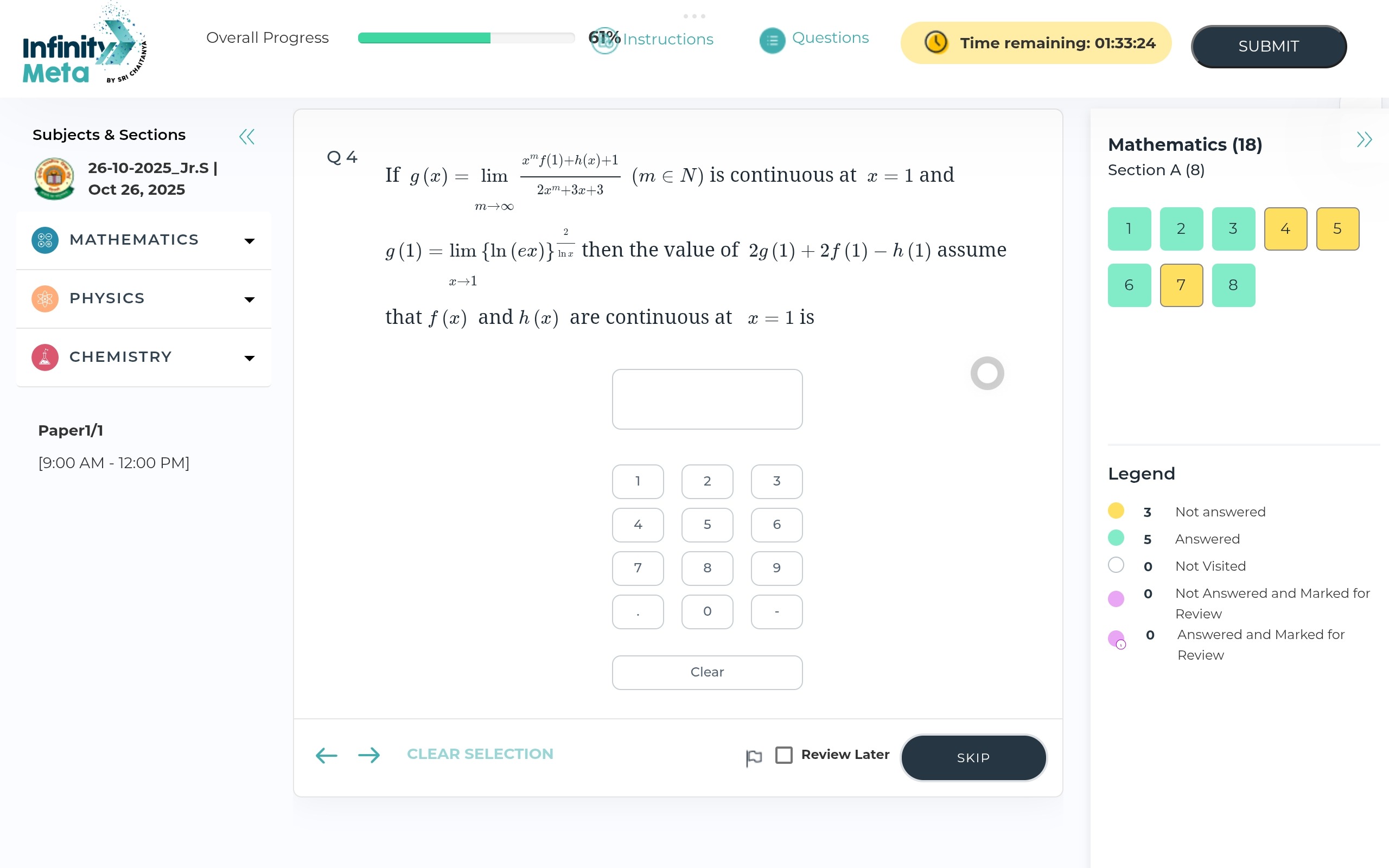Question
Question: If \(g(x) = \lim_{m\to\infty} \frac{x^m f(1)+h(x)+1}{2x^m+3x+3} (m \in N)\) is continuous at x = 1 a...
If g(x)=limm→∞2xm+3x+3xmf(1)+h(x)+1(m∈N) is continuous at x = 1 and g(1)=limx→1{ln(ex)}lnx2 then the value of 2g(1)+2f(1)−h(1) assume that f(x) and h(x) are continuous at x=1

Answer
1
Explanation
Solution
For x>1, g(x)=2f(1). Thus, limx→1+g(x)=2f(1). For 0≤x<1, g(x)=3x+3h(x)+1. Since h(x) is continuous at x=1, limx→1−g(x)=3(1)+3h(1)+1=6h(1)+1. Since g(x) is continuous at x=1, 2f(1)=6h(1)+1=g(1). This gives f(1)=2g(1) and h(1)=6g(1)−1.
To find g(1), let y={ln(ex)}lnx2. lny=lnx2ln(ln(ex)). Using L'Hopital's Rule: limx→1lny=limx→1x12⋅ln(ex)1⋅x1=limx→1ln(ex)2=ln(e)2=2. So, g(1)=e2.
The expression to evaluate is 2g(1)+2f(1)−h(1). Substituting the relations: 2g(1)+2(2g(1))−(6g(1)−1)=2g(1)+4g(1)−6g(1)+1=1.
